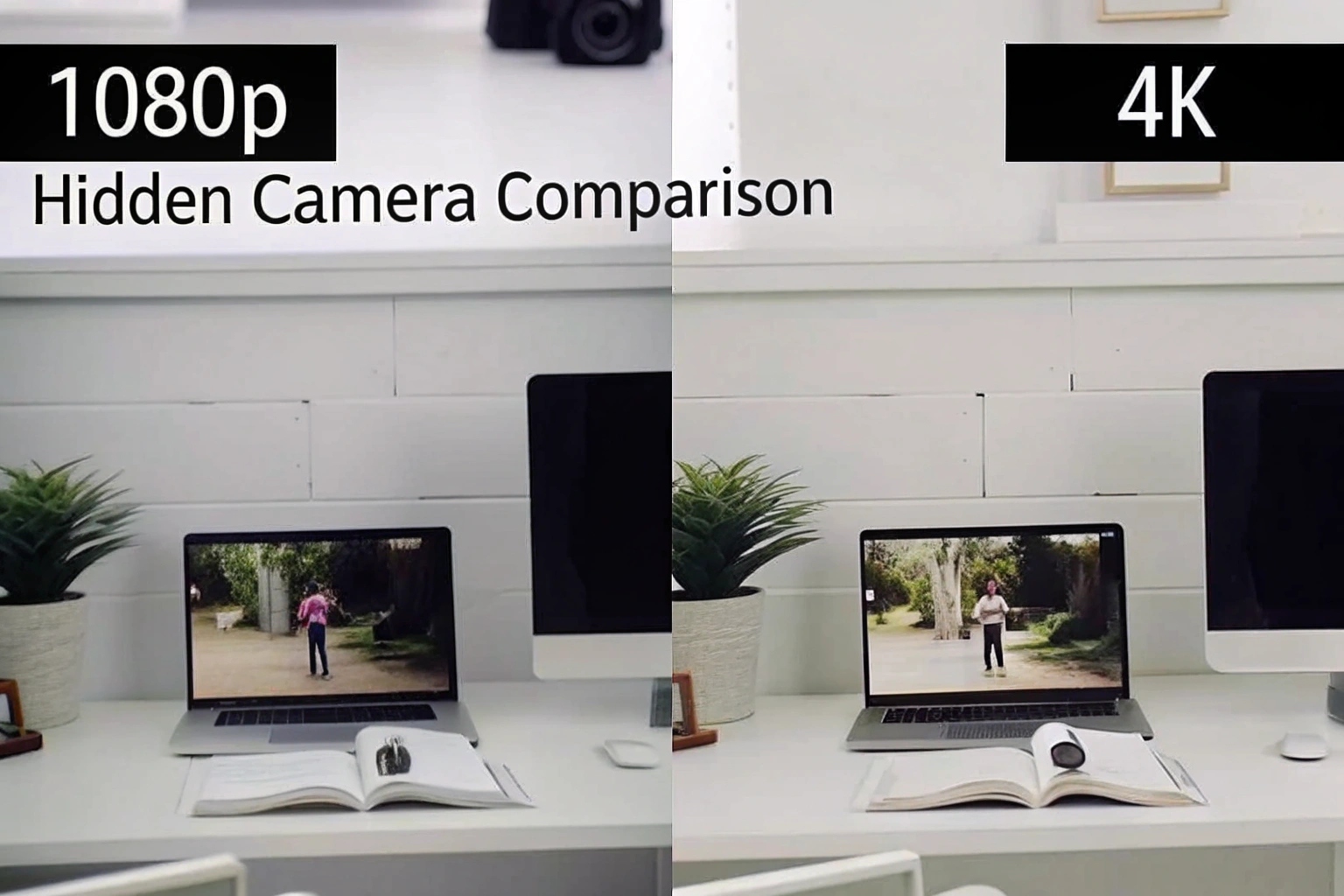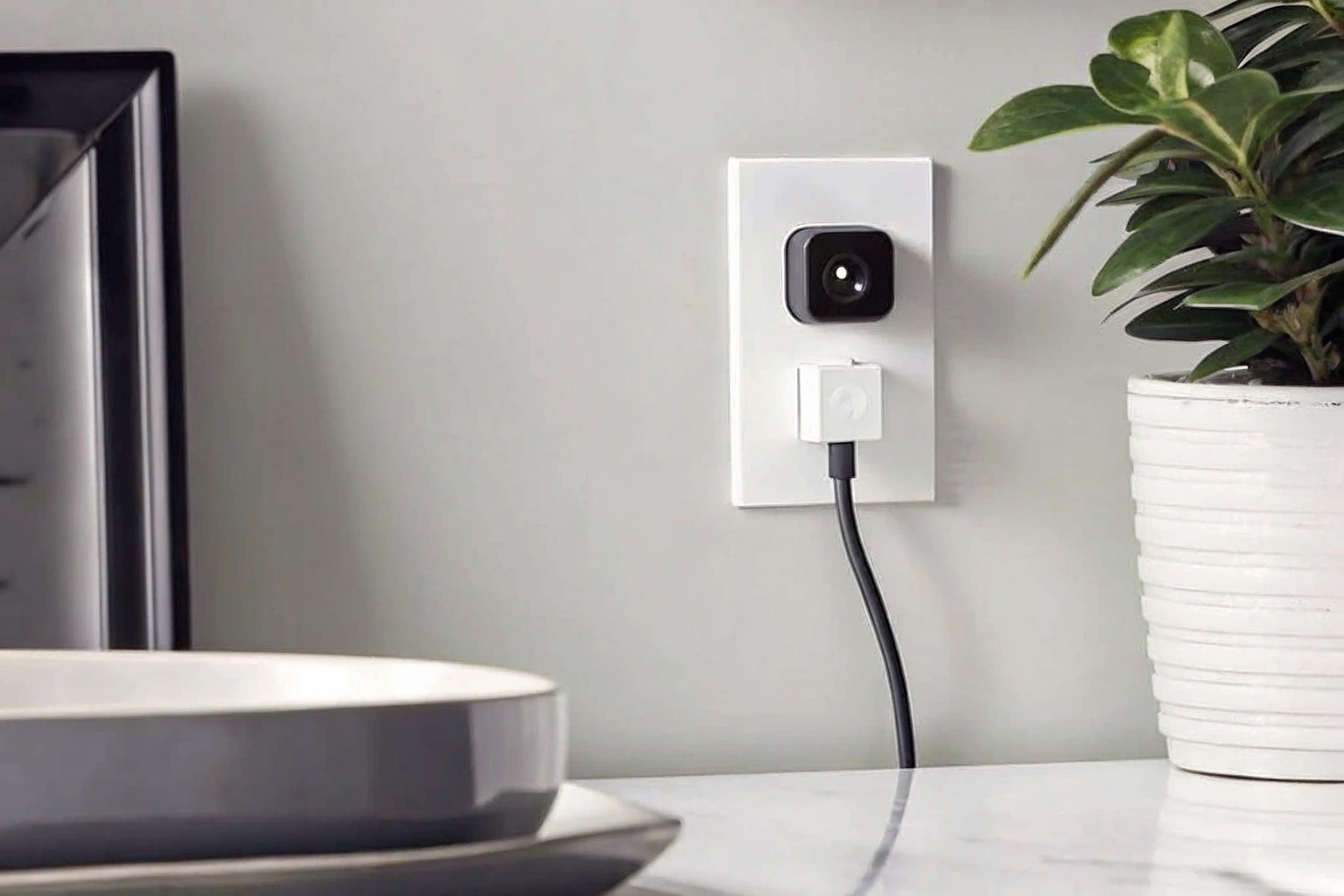Struggling to choose between 4K clarity and longer recording time? A 4K camera might die just when you need it most, making your surveillance efforts useless. Let's find the right balance.
For covert cameras, 1080p is often better than 4K. It provides clear, court-admissible evidence while offering significantly longer battery life. 4K's high power consumption makes it best for devices with a constant power source, not for discreet, mobile surveillance where recording duration is critical.

You might think more pixels always mean a better camera. It seems logical. But when it comes to covert surveillance, what looks good on a spec sheet can fail you in the field. I've seen it happen many times with my clients. The real question isn't just about clarity; it's about reliability when it matters most. Let's look at why the push for 4K isn't always the right move for professionals.
Can you really tell the difference between 1080p and 4K?
Worried 1080p isn't clear enough for you to identify faces? The jump to 4K seems obvious, but often, the difference isn't as dramatic as you'd think in practice.
Yes, you can tell the difference up close, especially when zooming in on recorded footage. 4K captures finer details. However, for general viewing and identifying individuals, 1080p is perfectly clear and sufficient for legal evidence. The difference becomes less noticeable on smaller monitoring screens like a smartphone.

The debate over 1080p and 4K often misses a critical point: context. Are you watching on a 60-inch monitor or a smartphone? In my experience, for a cautious B2C e-commerce owner like Piotr in Poland, his customers are likely reviewing footage on a phone or laptop. On these smaller screens, the perceived difference between 1080p and 4K is minimal for basic identification. The primary advantage of 4K is digital zoom. You can zoom in further on a 4K image before it becomes pixelated. However, a covert camera's core function is to answer one question: "Who was there and what did they do?" 1080p resolution is more than capable of answering this, and it's admissible as evidence in court. For many of my professional clients, reliability over extreme detail is the winning formula. I always tell them that even 720p is often enough for court-admissible evidence.
| Feature | 1080p (Full HD) | 4K (Ultra HD) |
|---|---|---|
| Primary Use Case | General surveillance, evidence gathering | Detailed analysis, digital zoom |
| Identifiability | Clear for faces and actions | Very clear, more detail on clothing, text |
| Practical Difference | Excellent for most covert needs | Noticeable only when zooming or on large screens |
Which is better 1080p or 4K security camera?
You want the best security camera, but the choice between 1080p and 4K is confusing. Choosing wrong could mean a dead battery or missed details when it counts.
For battery-powered covert cameras, 1080p is better due to its excellent balance of clarity and long recording time. A 4K camera is only better when it can be plugged into a constant power source, removing battery life as a concern. Functionality trumps resolution for field operations.

For my professional clients like Sossa in Italy, who resell our QZT products, reliability is their brand's reputation. They are highly loyal but also cautious and detail-oriented. They need products that work as advertised. They cannot sell a hidden camera that dies in 30 minutes. This is the central problem with 4K in portable, battery-operated devices.
The Battery Life Trade-Off
I always explain it with a simple example. A mini camera that records for 90 minutes in 1080p might only last 30 minutes in 4K. That’s a 66% reduction in operational time. For outdoor evidence gathering, duration is far more important than cinematic quality. A camera that captures 90 minutes of clear 1080p footage is infinitely more valuable than one that captures 30 minutes of ultra-sharp 4K and then dies. Customers will complain about short battery life, not that 1080p isn't clear enough. The function of getting the evidence is more important than the resolution.
When 4K Makes Sense
However, we do offer 4K models. And they are very popular for specific uses. 4K shines in products where battery life is not a factor. Think of our hidden cameras in wall clocks, USB chargers, or Tuya DIY modules integrated into household items. These devices are always plugged into a power outlet. Here, you get the benefit of maximum clarity without compromise. These are perfect for a homeowner or business wanting high-detail, continuous monitoring of a specific area.
How many GB is 1 hour of 4K video?
Think your 256GB card will last for days with a 4K camera? You might be surprised how quickly it fills up, potentially overwriting crucial evidence before you can save it.
One hour of 4K video can use between 20GB and 45GB of storage. The exact amount depends on the camera's compression, like H.264 or the more modern H.265, and the frame rate. In contrast, 1080p footage uses only 5GB to 10GB per hour, making it far more storage-efficient.

The jump from 1080p to 4K is not just about pixels and power; it is also about data. 4K footage is massive. This creates serious challenges for data transfer speeds and storage costs. For a distributor like Daniel in France, this detail matters. He needs to advise his customers properly. The need for larger, more expensive SD cards and the longer time it takes to download files are important considerations. Our CE/ROHS certifications prove our quality, and part of that quality promise is providing practical advice.
Storage Consumption Comparison
The difference in file size is staggering. A more efficient codec like H.265 can help reduce 4K file sizes, but they are still much larger than 1080p files.
| Resolution | Average Size (1 Hour) | Hours on 256GB Card |
|---|---|---|
| 1080p | ~8 GB | ~32 Hours |
| 4K | ~30 GB | ~8.5 Hours |
How long will a 256GB SD card hold 4K video?
As the table shows, a 256GB card, which seems huge, will only hold about 8 to 9 hours of 4K footage. For anyone needing continuous recording, that is less than half a day of coverage. The same card could hold around 32 hours, more than a full day, of 1080p footage. This makes 1080p a more practical "set it and forget it" solution for long-term monitoring, especially for portable devices.
Conclusion
In conclusion, 1080p offers the best balance of clarity and reliability for most covert surveillance. Choose 4K only when you have a constant power source and need maximum detail.


